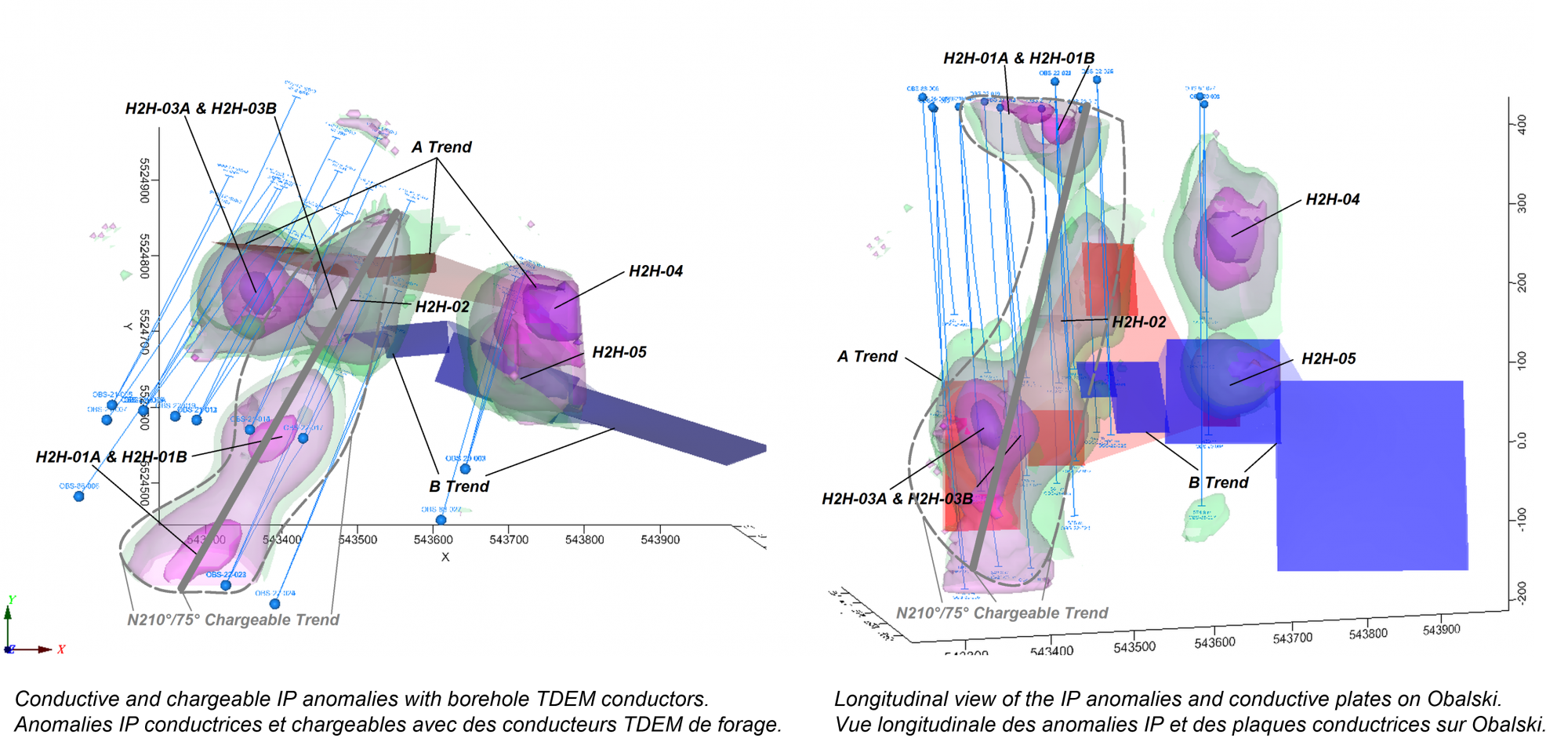
Gold-Copper Rich VMS Deposit – Readily detecting conductive massive sulfide lenses and chargeable alteration zones through borehole geophysics
TomaGold – Obalski Project, Quebec, Canada
The Obalski property is in the prolific Chibougamau mining camp of Québec. Discovered in 1928, exploration and mining has been going on ever since. The Obalski property is in the Lac Doré complex which has historically produced over 47 million tons of ore. The Obalski property hosts six known mineralized zones, an 85-metre shaft and two ramps. The copper-gold mineralization occurs as sulphide-rich quartz-carbonate veins within highly chloritized, carbonated and pyritized shear zones.
Our solution – Borehole electromagnetics (BHEM) and borehole induced polarization (BHIP)
Exploring and defining gold-copper rich VMS deposits is challenging due to their uneven distribution, complex mineralogy and structures, and burial depth, necessitating advanced techniques and expertise.

In 2022, Abitibi Geophysics was commissioned to perform BHEM and BHIP surveys on the property to provide a 3D model of the deposit and define exploration targets. The work began with the characterization of the electrical properties of the mineralized zones and the host rocks via borehole logging, which validated the use of two complementary technologies in a total of 22 drill holes: electromagnetism (EM) in the InfiniTEM XL configuration and induced polarization (IP) in the H2H-3D-IP configuration. In both cases, two orthogonal inducing field orientations were used to target the mineralized zones, regardless of their orientation.
Electromagnetic surveys are useful in the mineral exploration industry to detect economic metallic sulphides in Ni-Cu-PGE, VMS, and uranium deposits. The goal is to obtain enough data to successfully discover, position, and characterize conductive bodies. Our InfiniTEM XL technology can detect geological conductors to depths of 1000 meters from the surface and more than 700 meters from a borehole. IP surveys are a great tool to investigate the outer and inner periphery of the volume encompassing boreholes. Our H2H-3D-IP technology provides a high-resolution image of the subsurface structures, at a greater depth and larger radius of investigation compared with surface and conventional BHIP survey configurations.

Results
The boreholes InfiniTEM XL and H2H-3D-IP surveys resolved two conductive massive sulfide lenses and several chargeability anomalies. The survey results clarified decades of historical data. The EM conductors had a strong correlation to known mineralized intersections whereas the IP anomalies were in front of the conductors suggesting an alteration zone.



